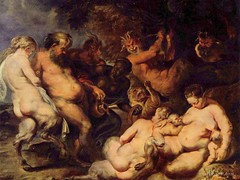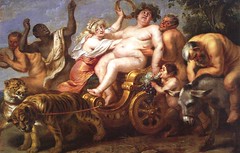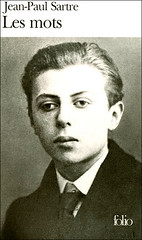Grafitti subversion of the original phrase, from the photostream of Paul Neve
A post[1] by Valter on Lev Shestov’s influence on Georges Bataille leads me again to the aphorism Nothing is True, Everything is Permitted. I think I’ve known this phrase from my Wired days, but first absorbed it consciously last summer while reading Burroughs’s excellent Cities of the Red Night.
Research of the last hour:
- “Nothing is true, all is permitted”: so said I to myself. Into the coldest water did I plunge with head and heart. Ah, how oft did I stand there naked on that account, like a red crab! —Thus Spoke Zarathustra
“Nothing is True, Everything is Permitted” is the famous aphorism attributed to Hassan i Sabbah.
The aphorism was first used by Friedrich Nietzsche in his 1880s work Thus Spoke Zarathustra (original German Nichts ist wahr, Alles ist erlaubt). Like Crowley‘s “‘Do what thou wilt’ shall be the whole of the law“, this phrase is often interpreted in its most literal sense to mean that objective reality does not exist (see relativism) and therefore that free will is unlimited. However, “Nothing is True and Everything is Permitted” is more widely interpreted to mean “there is no such thing as an objective truth outside of our perception; therefore, all things are true and possible”. It is a basic tenet in chaos magic and a core concept in discordianism and pirate utopias.
The aphorism is mentioned in the 1938 novel Alamut and in William Burroughs’s novel Cities of the Red Night. It is used as a credo on Axiom, Bill Laswell’s record label and alluded to in the title of Isis’s album In the Absence of Truth. Brion Gysin‘s biography is titled Nothing Is True – Everything Is Permitted: The Life of Brion Gysin.
P. S. Surya notes in his biography of Bataille that the phrase “nothing is true” originates with Dostoevski. There could be some truth in that since Dostoevski was born 20 years before Nietzsche.


















